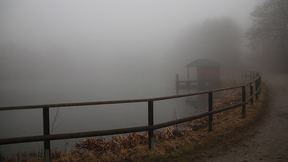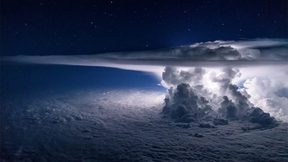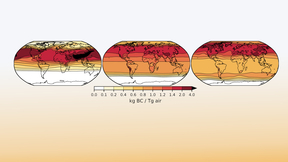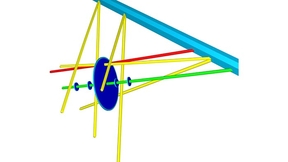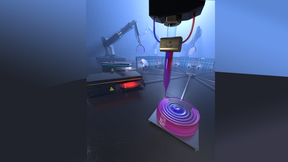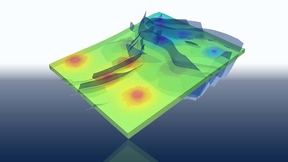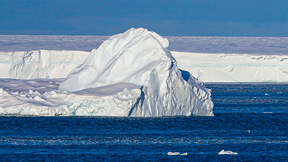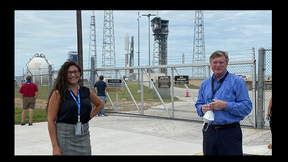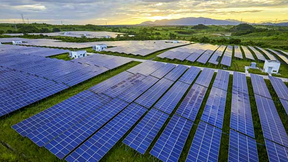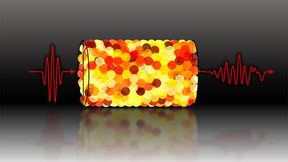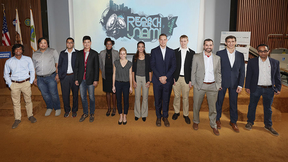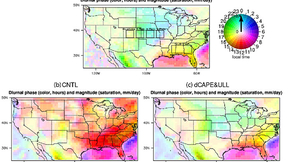Back
Atmospheric, Earth, and Energy
Air pollution levels depend on drizzle rates
Scientists from Lawrence Livermore National Laboratory (LLNL), Scripps Institution of Oceanography and international collaborators have shown that an improved representation of drizzle rates leads to more pollution in the atmosphere. The research appears in Nature Geoscience. Atmospheric aerosols are of great climatic and environmental importance due to their effects on…
Paying for emissions we’ve already released
The planet is committed to global warming in excess of 2 degrees Celsius (3.6 degrees Fahrenheit) just from greenhouse gases that have already been added to the atmosphere. This is the conclusion of new research by scientists from Nanjing University, Lawrence Livermore National Laboratory (LLNL) and Texas A&M University, which appears in the latest edition of Nature…
Climate models overestimate natural variability
By looking at satellite measurements of temperature changes in the lower layer of Earth’s atmosphere, scientists found that climate models may have overestimated the decade-to-decade natural variability of temperature. Lawrence Livermore National Laboratory (LLNL) statistician Giuliana Pallotta and climate scientist Benjamin Santer created a statistical framework to…
Lab scientists among most cited researchers worldwide
Fifty-seven researchers from Lawrence Livermore National Laboratory (LLNL) were among the top 2 percent of the most cited researchers worldwide throughout their careers, according to research on metascience by Stanford University. Metascience is the "study of studies" using scientific methods. Stanford University professor John Loannidis worked alongside U.S.-based Kevin…
Examining climate effects of regional nuclear exchange
A team of Lawrence Livermore National Laboratory (LLNL) researchers has found that the global climatic consequences of a regional nuclear weapons exchange could range from a minimal impact to more significant cooling lasting years. The five LLNL scientists examined the potential for global climate changes from large urban fires ignited in a hypothetical regional nuclear…
Tapping the Earth’s Heat for Clean Energy
Working in a deep underground tunnel, researchers are learning how to turn heat from impermeable rock into clean, low-carbon-emitting power.
3D-printed glass enhances optical design flexibility
Lawrence Livermore National Laboratory (LLNL) researchers have used multi-material 3D printing to create tailored gradient refractive index glass optics that could make for better military specialized eyewear and virtual reality goggles. The new technique could achieve a variety of conventional and unconventional optical functions in a flat glass component (with no surface…
LLNL wins two FLC awards for tech transfer
Two teams of Lawrence Livermore National Laboratory (LLNL) scientists and engineers, each supported by a Lab business development executive, have garnered regional awards for technology transfer. This year’s awards, one for outstanding technology development and the other for an outstanding partnership, will be presented next week during the Federal Laboratory Consortium’s…
LLNL, partners open access to CO2 storage simulator
After more than two years of joint research, Lawrence Livermore National Laboratory (LLNL), Total and Stanford University are releasing an open-source, high-performance simulator for large-scale geological carbon dioxide (CO2) storage. The GEOSX simulator will enable researchers around the world to build on the work of the three partners, providing an open framework to…
Girls persevere for STEM in virtual conference
More than 150 girls logged into their computers, excited to participate in the first-ever virtual San Joaquin Expanding Your Horizons (SJEYH) conference via Zoom last month. Now in its 28th year, SJEYH has a long history of inspiring young women and fostering awareness of careers in science, technology, engineering and math (STEM). The annual event normally draws more than…
LLNL researchers named to planetary science panels
Lawrence Livermore National Laboratory (LLNL) geologist Lars Borg and physicist Megan Bruck Syal were named by the National Academies of Science to a pair of Planetary Science and Astrobiology Decadal Survey committees last week, Borg as a member of the survey’s steering committee and Syal as a member of the Small Solar System Bodies panel. Over the coming year, the two…
More than half the oceans impacted by climate change
More than 50 percent of the world’s oceans already could be impacted by climate change, with this figure rising to 80 percent over the coming decades, a research team including Lawrence Livermore National Laboratory (LLNL) oceanographer Paul Durack has found, using global ocean salinity, temperature observations and a large suite of global climate models. The findings…
Laboratory team completes highest-ever resolution quake simulations using Sierra supercomputer
A Lawrence Livermore National Laboratory (LLNL) team has published new supercomputer simulations of a magnitude 7.0 earthquake on the Hayward Fault. This work represents the highest-ever resolution ground motion simulations from such an event on this scale. The study used the SW4 code developed at LLNL. Simulations resolved rapidly varying shaking with broader band…
Lab assists in NASA launch of Mars rover
When an Atlas V-541 rocket lifted off Thursday morning (July 30) for Mars from Cape Canaveral Air Force Station with the Perseverance rover in tow, two Lawrence Livermore National Laboratory (LLNL) scientists had front row seats. The pair, Steve Homann and Jessica Osuna, researchers in the Lab’s National Atmospheric Release Advisory Center (NARAC), part of the Nuclear…
Carbon emissions, energy flow charts for all U.S. states
Lawrence Livermore National Laboratory (LLNL) has updated its energy flow charts to include state-by-state energy use for 2015-2018. It also has released carbon emissions charts that depict a breakdown of all 50 states’ carbon emissions from 2014-2017. See the charts. Each year, LLNL releases flow charts that illustrate the nation's consumption and use of energy. This…
New analysis narrows range in climate sensitivity
The most advanced and comprehensive analysis of climate sensitivity undertaken has revealed with more confidence than ever how sensitive the Earth’s climate is to carbon dioxide. Climate warming depends on the changing composition of the atmosphere, and the “climate sensitivity” represents the dominant indicator of change, defined as the increase of global air temperature…
Catching a wave to study granular material properties
Stress wave propagation through granular material is important for detecting the magnitude of earthquakes, locating oil and gas reservoirs, designing acoustic insulation and designing materials for compacting powders. A team of researchers including Lawrence Livermore National Laboratory (LLNL) physicist Eric Herbold used X-ray measurements and analyses to show that…
PLS postdocs shine at Research Slam! competition
On October 29, 2019, twelve Lawrence Livermore postdocs took to the stage, each with three slides and three minutes to answer the question: “Why is your research important?” The presentations, part of a yearly competition known as the Research Slam!, were a culmination of months of development, training, and practice. The 2019 program kicked off with seminars about…
More accurate modeling of precipitation’s diurnal cycle
Precipitation is one of the most challenging aspects of climate to model, so the accuracy with which it is represented is therefore frequently cited as a barometer for the quality of climate forecasting. A shortcoming in current climate models is their inability to accurately predict diurnal precipitation patterns. Over land, the daily precipitation cycle is strong: As the…
Bioprinting of live cells enhances catalytic efficiency
Critical to the success of high-performance, three-dimensional (3D) printed living materials is the development of new ink materials and 3D geometries that favor long-term cell functionality. To address this challenge, a cross-directorate LLNL team, collaborating with National Renewable Energy Laboratory researchers, has invented a new bio-ink system using viable freeze…


